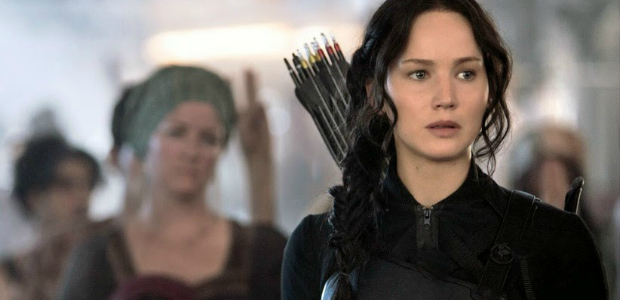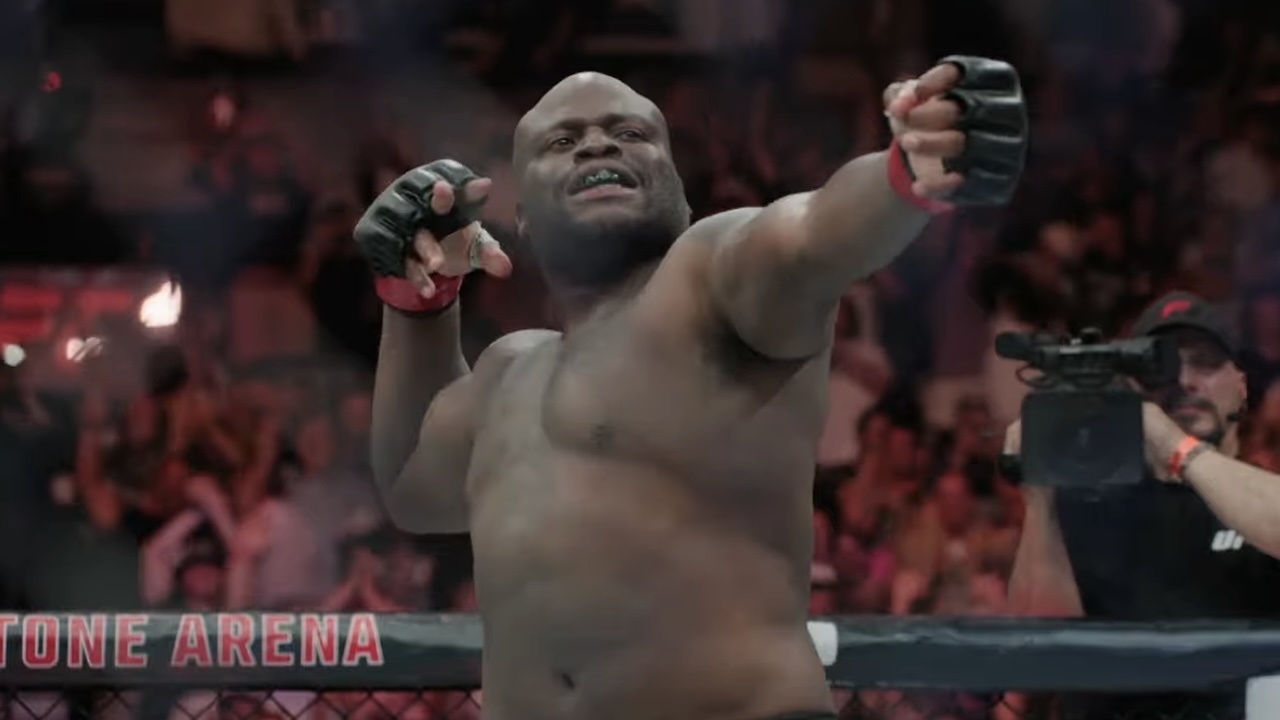It’s very likely that Francis Lawrence’s The Hunger Games: Mockingjay – Part 1 is not the movie that you’re expecting. Moving beyond the structure that helped make the first two films in the series so successful – seeing star Katniss Everdeen forced to compete in a deadly competition that pits her against her peers in an arena setting – the new sequel instead takes the franchise themes of revolution and resistance to the next level, taking its characters to war. Rather than struggling with this massive shift, however, the new film simply makes the dystopian world that much more fascinating and exciting, and is ultimately another very successful chapter in the blockbuster series.
Picking up just after the events of The Hunger Games: Catching Fire, the new film finds Katniss (Jennifer Lawrence) within the bowels of a large, underground military complex where she suddenly finds herself as the wanted figurehead of a growing rebellion. Her acts of defiance against President Snow (Donald Sutherland) and the Capitol during The Hunger Games have successfully sown the seeds of revolution, and she has inspired the people of Panem to rise up against their fascist overlords and try to take their nation back. But while the country is on the verge of war, Katniss must not only decide if she will take the responsibility of leadership that has been thrust upon her, but also try and find a way to rescue Peeta (Josh Hutcherson), who has been taken hostage and imprisoned by the enemy.
Though it is perhaps a bit inaccessible to those who have not followed the series up to this point, and it feels more like an extended chapter of a longer saga than a self-contained plot, The Hunger Games: Mockingjay – Part 1 finds its success in meaningful themes, character-driven story, and smart execution, and ultimately creates some impressive depth for the phenomenon franchise.
Mockingjay – Part 1 can be best categorized as a war film, but what impressively sets it apart from its blockbuster brethren is the surprisingly little dependence that it has on action sequences, explosions and on-screen violence. Instead, it opts for a much more fascinating political and personal approach, as we see through Katniss’ eyes what it takes to motivate revolution and its extreme cost. The teenage archer is certainly brave and heroic in the face of danger, but a bold, military leader she is not, and the film fully dives into her struggle accepting her role and becoming the symbol everyone needs her to be – all while a man she loves is being held prisoner and tortured. Propaganda videos are explored as being just as important as the new explosive-tipped arrows that the heroine is provided with, and it works because the drama is just as satisfying as the mission and battle sequences.
Being so driven by internal conflicts, The Hunger Games: Mockingjay – Part 1 provides itself opportunity for great character work – and while it’s obviously Katniss who gets the most development (backed by yet another brilliant performance from Jennifer Lawrence), it’s fantastic to see the rest of the ensemble get their shining moments as well. After being stranded on the outskirts of the story in the first two films, Liam Hemsworth’s Gale finally gets some material that he can really sink his teeth into – torn apart by his feelings for Katniss, her close bond with Peeta, and his own personal revolutionary spirit. Contextual changes also do great things for Elizabeth Banks’ Effie (who is horrified to go from colorful Capitol garb to a grey District 13 jumpsuit); Woody Harrelson’s Haymitch (who is forced to ‘dry out’ a bit); Philip Seymour Hoffman’s Plutarch (who has a very influential position within the rebellion); and Jeffrey Wright’s Beetee (who finds a role to play as the revolution’s tech expert). There’s even room for some great new characters, as Julianne’s President Coin - leader of the revolt – becomes a complex new ally and antagonist for our heroine.
Of course, you can’t sell revolution to an audience if they don’t have a complete understanding of what’s being revolted against, and the good news is that Francis Lawrence and screenwriters Danny Strong and Peter Craig don’t short sell it. From public executions to firebombed cities to threatening speeches, there is no shortage of evil being displayed by the Capitol, and it’s all presented in affecting and shocking ways. As the central antagonist, Donald Sutherland continues to play President Snow with a creepy confidence that sells the idea that he has seen revolutions come and go and feels little threat to his power – which, when combined with Katniss’ uncertainty creates a threatening David and Goliath atmosphere.
As the Part 1 in the title suggests, this first half of The Hunger Games: Mockingjay doesn’t really provide any big conclusions or complete any arcs, but this lacking only slightly undercuts what the film adds to the franchise as a whole. There’s a great deal of smart thematic and character work that adds to the world of The Hunger Games, and will only serve to get fans more excited for the story’s conclusion.
Your Daily Blend of Entertainment News

Eric Eisenberg is the Assistant Managing Editor at CinemaBlend. After graduating Boston University and earning a bachelor’s degree in journalism, he took a part-time job as a staff writer for CinemaBlend, and after six months was offered the opportunity to move to Los Angeles and take on a newly created West Coast Editor position. Over a decade later, he's continuing to advance his interests and expertise. In addition to conducting filmmaker interviews and contributing to the news and feature content of the site, Eric also oversees the Movie Reviews section, writes the the weekend box office report (published Sundays), and is the site's resident Stephen King expert. He has two King-related columns.

